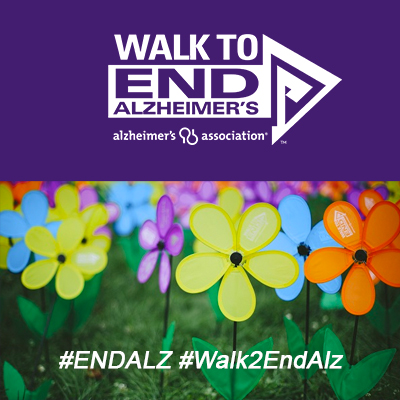Are you a Dementia Friend?
Recently I completed my certification as a Dementia Friend. (cue the balloon drop, the fireworks, and the band) All in all, it was a simple task.
Did you know that as high as one in ten seniors experience a form of dementia. Potential signs of dementia include:
- Difficulty communicating
- Getting lost
- Becoming frustrated
- Exhibiting confusion
- Repeating words and phrases
- Poor judgment
- Unusual or inappropriate behavior
So, how can you help those with dementia live life better? In reality, it is an exercise in mindfulness. Are you mindful of those around you who are struggling with dementia? Here are some ways that you can easily make them feel valued and allow them to feel comfortable in your community.
- Treat the person with dignity and respect
- Avoid talking past the person
- Be patient and supportive
- Let the person know that you are listening, and trying to understand
- Avoid criticizing or correcting
- Offer comfort and reassurance
As a Senior Move Manager, I have been educated about dementia and Alzheimers for years. Each of our NASMM conferences includes some training for dealing with clients who are in various stages of the disease. So I thought I knew “everything” about it… But, I’ve learned that even the experts have a long way to go in learning about dementia.
The most revealing experience for me was watching the “Virtual Dementia Tour” available HERE
Second Wind Dreams was founded as an organization to grant dreams for elderly individuals living in long-term care facilities (similar to the Make a Wish Foundation grants wishes for children with terminal disease). They also focused on offering educational programs to help caregivers understand the physical and mental challenges facing those with dementia.
 Founder, B.K. Beville, created the internationally-acclaimed Virtual Dementia Tour® (VDT®), a scientifically-proven training method designed to build sensitivity and awareness in individuals caring for those with dementia. By creating a space filled with typical “clutter” that dementia patients live with, it allows the learner to experience dementia through their own senses.
Founder, B.K. Beville, created the internationally-acclaimed Virtual Dementia Tour® (VDT®), a scientifically-proven training method designed to build sensitivity and awareness in individuals caring for those with dementia. By creating a space filled with typical “clutter” that dementia patients live with, it allows the learner to experience dementia through their own senses.
Sight Most patients with dementia experience low and altered vision. This could be the typical signs of aging, i.e. yellowing of the eyes, blurring and floaters, the black lace curtain or cobweb created by a posterior vitreous detachment, cataracts or central vision loss or blurring caused by macular degeneration. Participants on the VDT receive glasses that restrict their vision with one or more of these conditions. The lights are also dimmed as they are in most adult living quarters.
Sound Dementia patients sometimes have tinnitus and/or auditory hallucinations. These are duplicated by giving the learner headphones with a constant scratching, hissing, or crackling noises that cause mental distraction, along with street noises and typical hallway interactions, including alarms or slamming doors.
Touch Learners on the virtual tour are given gloves that disrupt fine motor skills, mimicking the loss that most dementia patients have experienced through conditions like arthritis, tendonitis, or carpal tunnel syndrome. They also receive inserts for their shoes to allow them to experience issues like neuropathy.
After the learner is properly outfitted, they are led into a room that is typical of a small apartment in an assisted living facility. They are given five tasks to accomplish – such as find a white sweater and put it on and zip it up; take three pills out of two bottles and put them in a cup; put the batteries in the flashlight and turn it on; write down seven things that are brown that you would find in a grocery store; set the clock at 8:50. They are given ten minutes to complete these tasks.
Most learners finish the tour having completed or partially completed fewer than three of the tasks. Comments from the learners included:
“It made me so much more aware of my own Grandma’s situation.”
“I feel like this experience changed the way that I see those with dementia.”
“My Grandma [was] living in such a scary place in her head.”
“One thing I learned is how easy it is to startle them. You should let them see you first.”
There are more than 100 types of dementia documented in medicine. Alzheimer’s is one that gets the most attention because 60% of sufferers have this type of dementia. If this blog has inspired you to get involved in helping those with dementia, there are some easy ways to do so.
Become a dementia friend: Click on this link, watch the videos. Take a quick assessment. CLICK HERE for assessment.
Gather a team and participate in a local Alzheimer’s Walk. In Quincy, the walk is Saturday, September 23rd. For more information on the Quincy Walk CLICK HERE
 If you are a singer or musician, volunteer to perform for dementia patients in a local care facility. Studies show that this can calm those in the mid-stages of the disease. CLICK HERE for more information.
If you are a singer or musician, volunteer to perform for dementia patients in a local care facility. Studies show that this can calm those in the mid-stages of the disease. CLICK HERE for more information.
Finally, make a point to treat those who exhibit signs of dementia with dignity and respect. One of the most important things I learned is never to ask them, “Remember when?” No, they don’t remember, but if you guide them to a memory by stating that you remember fondly the barn that stood behind their house – and feeding the chickens when you were little. That might spark an engagement in the conversation, or it might not. Don’t get frustrated, and don’t blame them for not remembering. Simply talk to them until they are ready to engage with you and respond accordingly.
And, if you know someone whose disease is at a stage where they need to move to safer surroundings, we at Golden Bridges are trained to deal with their issues through our core values of compassion, innovation and determination. It’s your move, Golden Bridges can help.